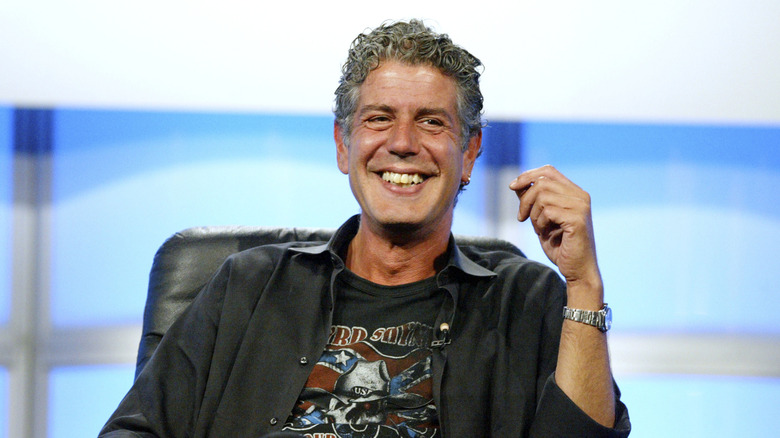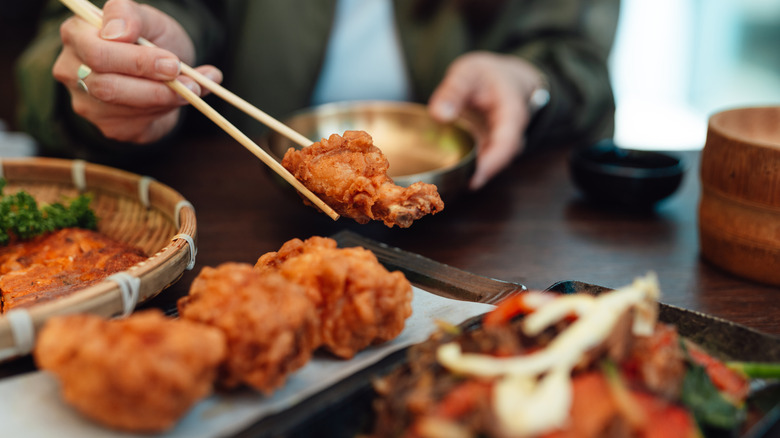Why Anthony Bourdain's Korean Fried Chicken Takes 2 Days To Make
There's nothing quite so satisfying as the ear-splitting, earth-shattering crunch that comes when you take a bite of perfectly-cooked Korean fried chicken. While the various flavors offered by Korean chicken joints are delicious, the texture is worth traveling the globe for. But luckily, with the help of someone who has already traveled the globe, you can get that satisfying bite without needing a passport. Just know that if you take a stab at Anthony Bourdain's Korean fried chicken recipe, taken from his cookbook "Appetites," you're going to need two days to get it right.
Bourdain instructed to take marinated chicken, toss it in potato starch, and then fry it until the chicken is nearly, but not fully, cooked. Then, wrap and freeze the chicken overnight. Anthony Bourdain's strategy here, which he credits to chef Danny Bowien, founder of the iconic restaurant Mission Chinese, is an extension of the main difference between Korean and American fried chicken. Korean chicken is double-fried, first at low heat to create an insulating layer that retains the bird's natural juices, and then at high heat to achieve the crispiest possible exterior.
When done correctly, that results in the meat of the chicken being incredibly moist while the skin is extra crunchy. Freezing it takes this a step further by transforming the remaining moisture into ice crystals, which disrupts the batter's starches and creates more surface area for enhanced crispiness.
Finishing touches on Bourdain's Korean fried chicken
The next day, remove the meat from the freezer an hour before cooking, set the oil to a slightly higher heat (350 degrees Fahrenheit as opposed to the previous day's 300 degrees), and finish the cooking process, which takes about 10 more minutes. Using a wire rack instead of transferring the meat straight to a plate or sheet pan will allow the chicken to cool without losing its crunch. Finally, complete the job by tossing the poultry in a spicy, garlicky sauce sweetened with a bit of maple syrup — and Bourdain advocated for a dash of MSG to really make the flavor pop, though that is up to the cook's discretion.
After all, one of the beautiful things about Korean fried chicken is the many forms it can take when it comes to sauces and flavor profiles. These flavors range from spicy to sweet, from dry to wet, and are worth experimenting with if you're trying your hand at Korean fried chicken. As a starting point, yangnyeom-tondak is an iconic, delicious international fried chicken style worth traveling for, and it comes with two primary sauces: a honey, soy, garlic sauce and a spicy gochujang-based sauce.
To cut the richness of the meal, Bourdain advised serving the chicken with pickled radish and, of course, a cold beer. If you want to go all-out on the Korean-themed fun, you can even try your hand at the popular drinking game APT.


